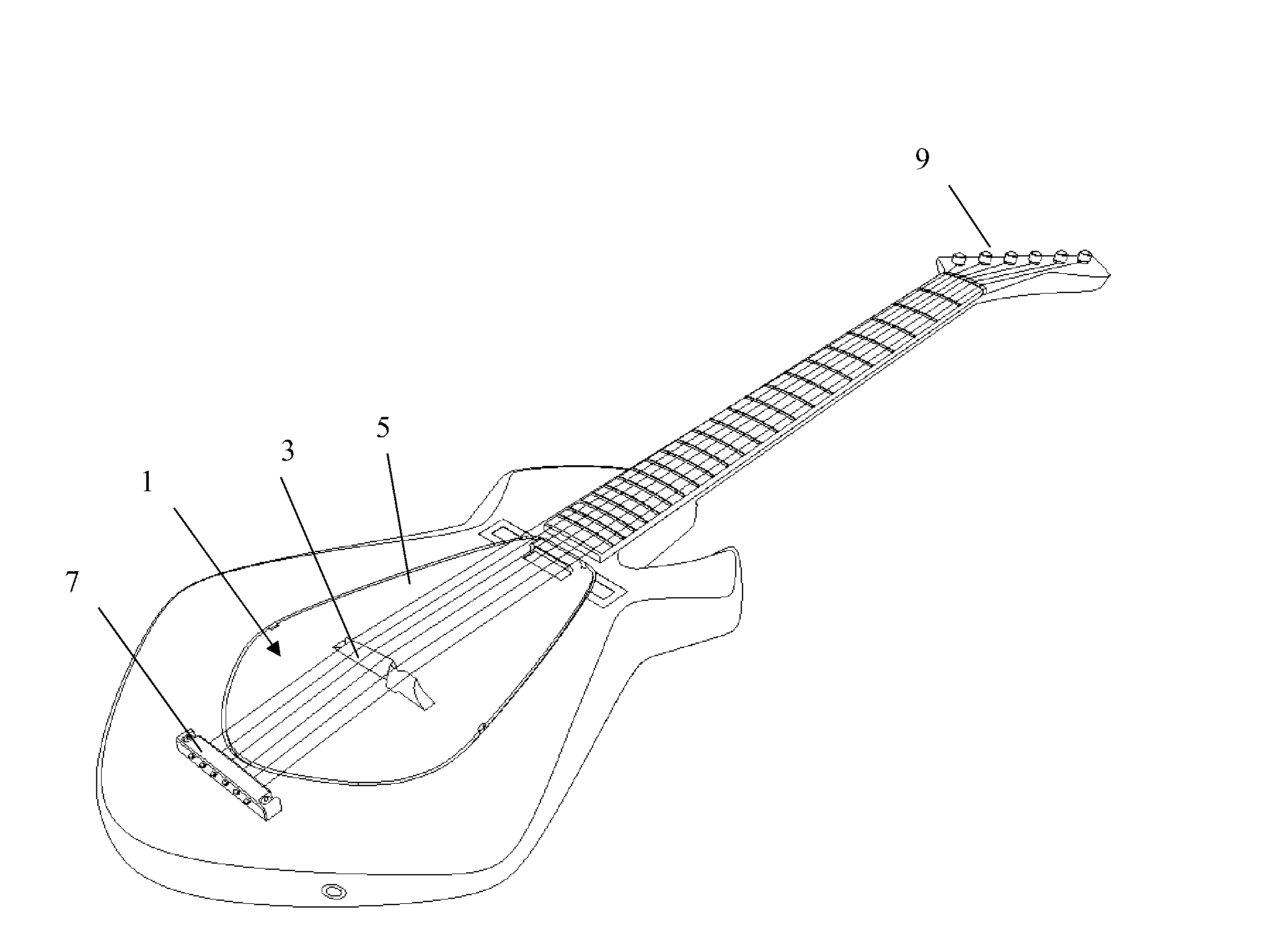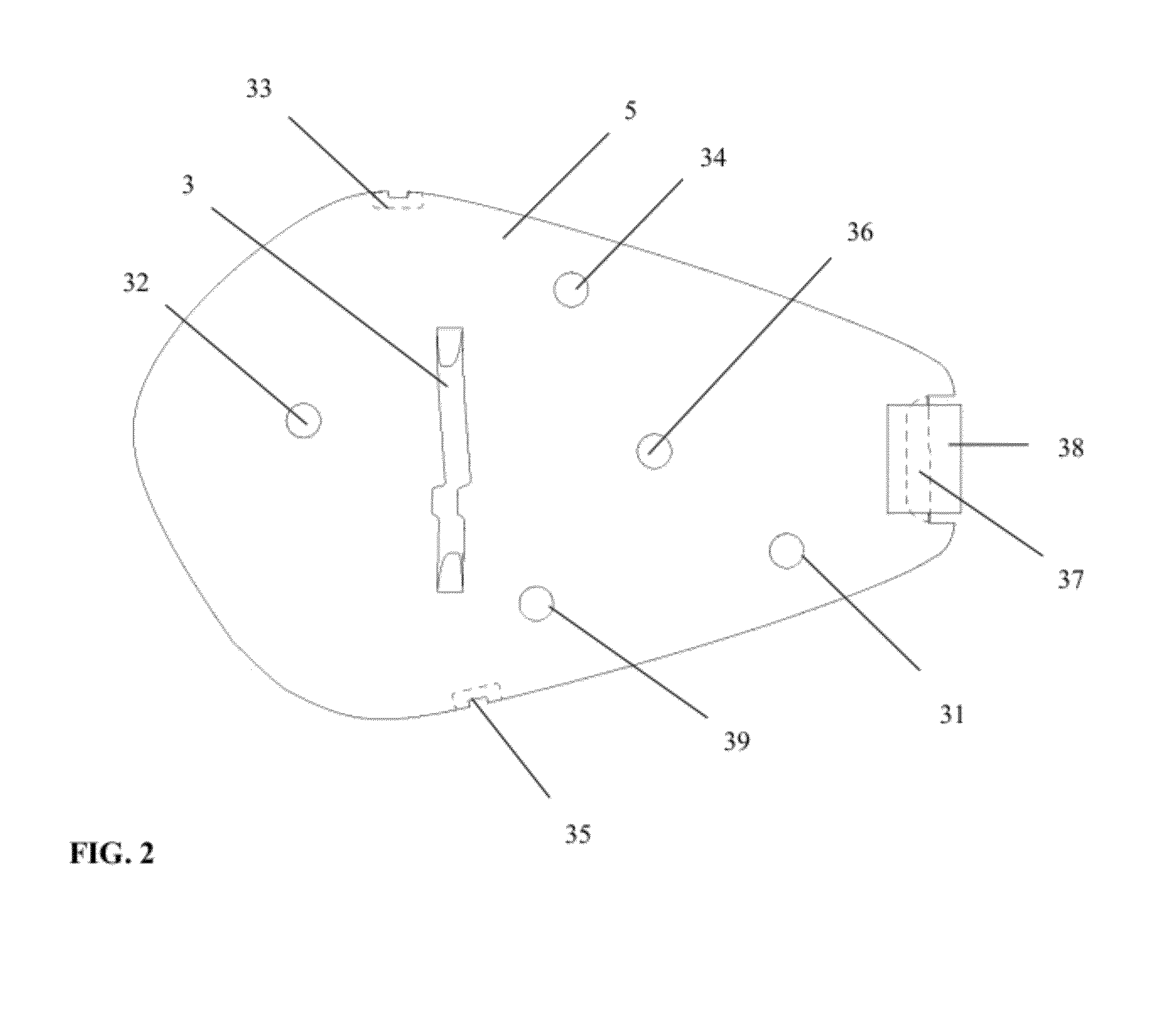Digital instrument with physical resonator
a digital instrument and physical resonator technology, applied in the field of stringed musical instruments, can solve problems such as human hearing limitations, and achieve the effects of changing the sound of the soundboard, facilitating insertion and removal, and great flexibility in adjusting the acoustic qualities of the soundboard
- Summary
- Abstract
- Description
- Claims
- Application Information
AI Technical Summary
Benefits of technology
Problems solved by technology
Method used
Image
Examples
Embodiment Construction
[0038]Before describing this invention, it is helpful to first briefly discuss soundboards, which are also called a sounding board, belly or plate in some instruments. Examples of soundboards include the front side of an acoustic guitar, the face plate of a violin, or a sounding board beneath the strings in a grand piano. In many stringed musical instruments, the strings are not able to create a sufficiently loud sound by themselves. To increase loudness, the vibrations of the strings are transmitted through a bridge to a soundboard, causing the soundboard to vibrate. Because the soundboard has a larger surface area than the strings, it can move a larger volume of air, producing a louder sound.
[0039]In an implementation of this invention, a stringed musical instrument has a resonator comprised of a bridge and a soundboard. Vibrations of the instrument's strings are directly or indirectly transmitted through the bridge to the soundboard. A plurality of sensors are attached to or embe...
PUM
 Login to View More
Login to View More Abstract
Description
Claims
Application Information
 Login to View More
Login to View More - R&D
- Intellectual Property
- Life Sciences
- Materials
- Tech Scout
- Unparalleled Data Quality
- Higher Quality Content
- 60% Fewer Hallucinations
Browse by: Latest US Patents, China's latest patents, Technical Efficacy Thesaurus, Application Domain, Technology Topic, Popular Technical Reports.
© 2025 PatSnap. All rights reserved.Legal|Privacy policy|Modern Slavery Act Transparency Statement|Sitemap|About US| Contact US: help@patsnap.com



